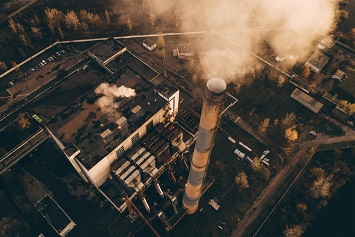In a final rule, the EPA is amending technical provisions of its 2016 New Source Performance Standards (NSPS) and Emission Guidelines (EG) for Commercial and Industrial Solid Waste Incinerators (CISWIs). Most of the amendments respond to requests for clarification the Agency received from industry stakeholders and implementing agencies following the 2016 action.
According to the EPA, the technical amendments do not constitute substantial changes to the NSPS and EG and, hence, will not result in environmental, energy, or economic impacts.
New and Existing Sources
A CISWI unit is any device used to burn solid waste at a commercial or industrial facility. These units include those designed to discard solid waste; energy recovery units designed to recover heat from the combustion of solid waste; and waste-burning kilns that combust solid waste in the manufacture of a product.
The NSPSs are directly enforceable federal regulations and apply to units for which construction commenced after November 30, 1999, but no later than June 4, 2010, or for which reconstruction or modification commenced on or after June 1, 2001, but no later than August 7, 2013. These units are considered new until the units become subject to the requirements of an approved state EG plan, which covers existing units.
If It Burns Waste, It’s an Incinerator
The initial NSPS and EG for CISWIs were issued in 2000. Since then, the Agency has taken many actions to amend and clarify the CISWI . These include a major revision in 2011 following vacatur of the 2005 CISWI rule by the U.S. Court of Appeals for the D.C. Circuit. The court found that the Agency’s decision in 2005 to classify units that burn solid waste for energy recovery as boilers or process heaters contravened the Clean Air Act (CAA); the court concluded that apart from four statutory exemptions, a unit that burns any solid waste is an incinerator subject to CAA Section 129. Following that ruling, the Agency needed to amend its CISWI NSPS and EG to include energy recovery units and waste-burning kilns.
Mercury, CEMS, Air-Curtain Incinerators
The current amendments were proposed on June 15, 2018, and comprise the following:
- Setting the emissions limit for mercury for waste-burning kilns as a production-based limit (e., pounds per million tons clinker) as an alternative equivalent standard to the existing concentration-based standard (i.e., milligrams per dry standard cubic meter) to match the format of the mercury standards found in the Portland Cement National Emissions Standards for Hazardous Air Pollutants;
- Changing the timing of the continuous emissions monitoring system (CEMS) initial performance evaluation from 60 days to 180 days from installation to match the schedule allowed for conducting the initial performance test;
- Extending the reporting requirement for electronic submission of initial, annual, and deviation reports to the Compliance and Emissions Data Reporting Interface (CEDRI) to 2 years from publication of the final rule or 1 year after the reporting form becomes available in the CEDRI, whichever date is later;
- Clarifying with respect to the EGs which federal authorities will not be delegated to the states;
- Clarifying that a CEMS may be used to demonstrate initial compliance for any pollutant (e., with any of the emissions limits included in the rule);
- Clarifying that a carbon monoxide CEMS is not required for new waste-burning kilns and that outdated notification requirements have been removed when a particulate matter CEMS is being used;
- Clarifying the reduced testing provisions for sources that have demonstrated good performance;
- Clarifying the deviation reporting requirements for 30-day rolling averages allowed for energy recovery units and particulate matter CEMS; and
- Clarifying that air curtain incinerators (which burn only lumber, wood waste, and yard waste) are subject to the CISWI.
“This final rule provides meaningful burden reduction by providing regulated facilities additional time to complete initial compliance demonstrations and by allowing facilities to comply with production-based emission limits in lieu of the concentration-based limits in the 2016 CISWI rule,” states the EPA.

